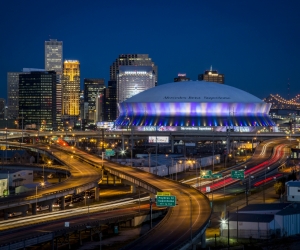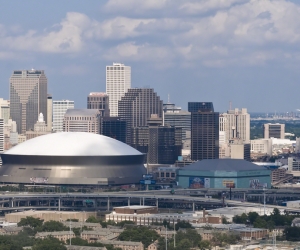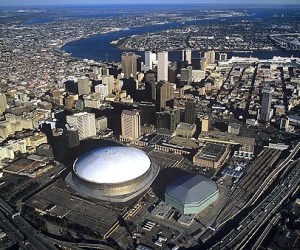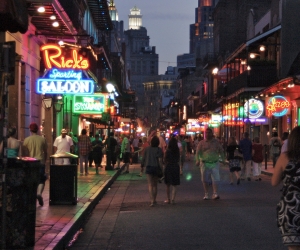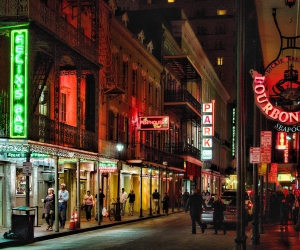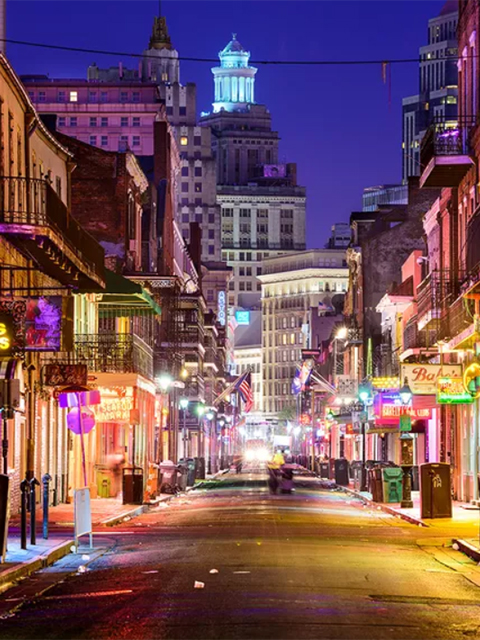About New Orleans, LA
Thinking about making the move to New Orleans? There's a lot to consider. What's the weather like in New Orleans? What things are New Orleans most known for and how does that match with your interests? How much is the cost of living? What's the culture like? We've compiled all of this information for you in order to give you a sense of what life is like in New Orleans year round, and also made it easy for you to compare against other cities that you might be considering.
About New Orleans - "The Big Easy"
The official New Orleans motto is "Laissez les bons temps rouler!" In English, that translates to "Let the good times roll!", which certainly fits this lively city. NOLA (the short term for New Orleans, Louisiana) is also known as the Crescent City because the heart of the city, the French Quarter, was built at a sharp bend in the Mississippi River in the shape of a crescent. The French Quarter is popular among tourists and locals due to its many shopping opportunities and street vendors. This area is where Jean-Baptiste Le Moyne, Sieur de Bienville founded the city. The French Quarter runs thirteen city blocks long and six blocks deep, marking the original boundary of New Orleans. You can also head to the nearby "Frenchmen Street" to enjoy the often hopping nightlife. New Orleans is the birthplace of jazz, as well as its descendants, rock and roll and the blues. Along with music, NOLA is famous for its Cajun cuisines and other delectable masterpieces. The Creole Cuisine is especially famous, with King Cake and Jambalaya being among the favorites for locals and visitors alike. New Orleans is an extraordinarily flat city. In fact, throughout the entire city there are only two true hills. Both of them are man-made. Monkey Hill, which is found at the Audubon Zoo, was actually built specifically to give local kids the "experience" of a hill. Not only is New Orleans flat, but parts of NOLA actually lie underneath sea level. As a result, most homes in the city lack a traditional "basement". The "basement" for many homes is actually the ground floor, while many homes have their main entrances on the second story. New Orleans is also consistently ranked as one of the spookiest places in America. There are a number of tombs and graveyards spread throughout the city. Many of them are raised. This is due to long-standing "old world" traditions in the Roman Catholic areas of France and Spain. Some people mistakenly think that this is due to the high water tables. Speaking of "old world", New Orleans has the most historic districts in the United States. In fact, the city has 20 more districts than the next closest competitor. Visitors looking to experience this heritage should consider booking a stay at one of the several historic hotels. Many of these hotels are world class, with rooftop pools, revolving bars, and private spas. New Orleans is home to a number of interesting sites, but not all of them are historic. There is the Superdome, where the New Orleans Saints play. Uniquely, the seats in the Superdome are different colors from their neighbors, creating an "always full" illusion. There's also the Lake Ponchartrain Causeway, which at nearly 24 miles long is the longest continuous bridge over water in the whole world. NOLA can get very humid, especially as the summer draws to a close. Don't let that slow you down from getting outside, however. A quick ride via ferry across the river is free for pedestrians and will also provide perhaps the best photo-op in the city. The ride is at the foot of Canal Street. NOLA is also quite affordable, especially if you buy in the right areas. Fixer-uppers can be picked up in some areas practically for free. It might take a year or so to get your new-old abode ready, and you'll have to deal with contractors, but you could end up with your own historic masterpiece (with a yard!) for the same price of a condo in a big city like Boston. Ultimately, NOLA is a culturally-rich southern city that offers many things to do and see. Its history as a French city, along with its role in the history of music and locally flavored cuisines, make New Orleans a unique town for tourists and locals alike. |


